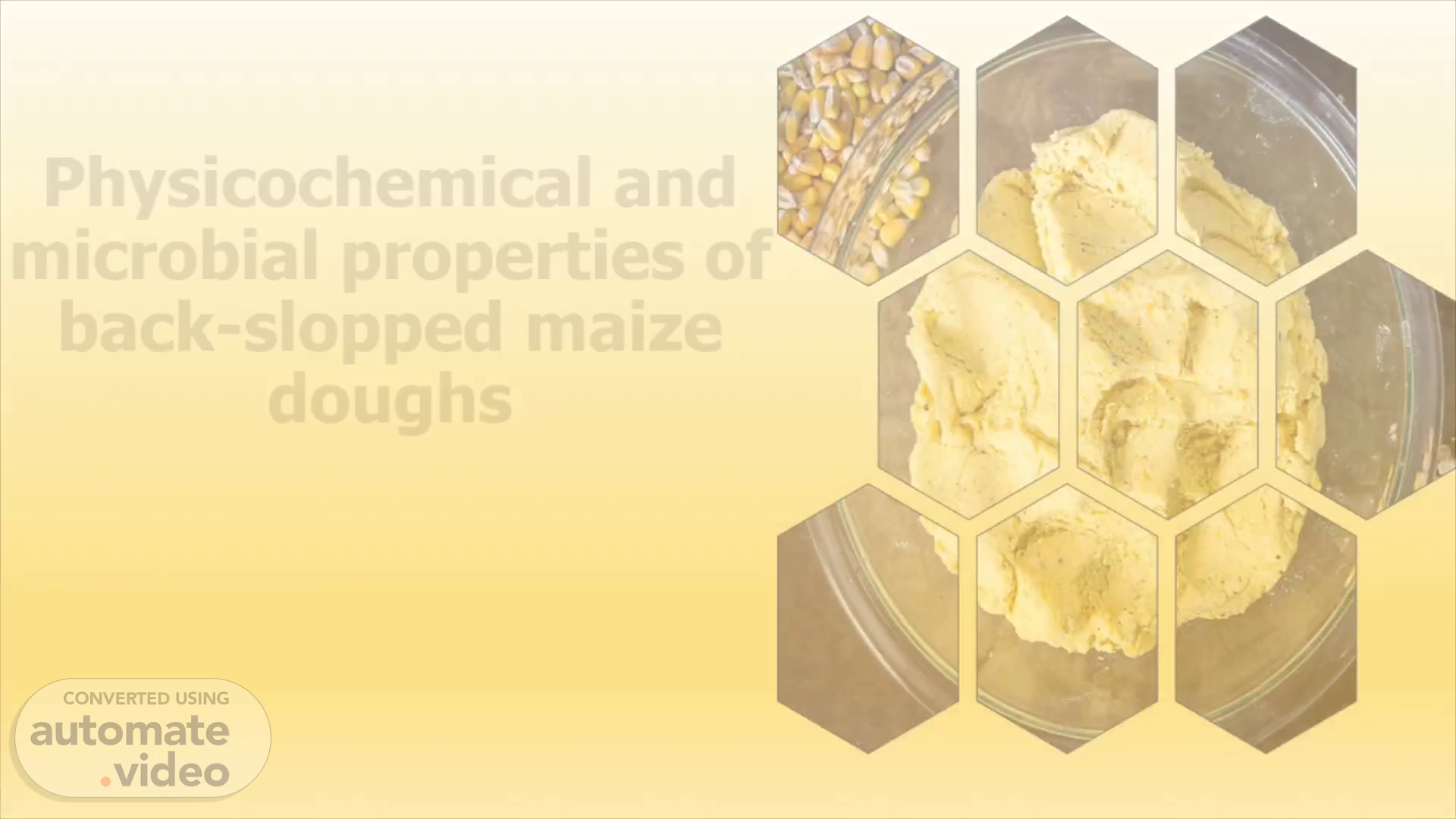
Physicochemical and microbial properties of back-slopped maize doughs
Scene 1 (0s)
[Audio] Good morning everyone. Today, I am here to present the proposal defense of Gideon Yaw Amoako Ghartey. The proposal focuses on the physicochemical and microbial properties of back-slopped maize doughs to shorten the fermentation process while preserving the quality of the final product. I'll be going over the details of the proposal today and I look forward to discussing it with you..
Scene 2 (25s)
[Audio] I will start by presenting a presentation outline which will include the topics I will cover during this proposal defense. These include the background, problem statement, significance and justification for my study, objectives and specific objectives, materials and methods I plan to use, study and work plan, budget and references. Each of these topics will be discussed in more detail during my presentation..
Scene 3 (51s)
[Audio] The topic of this presentation is the physicochemical and microbial properties of back-slopped maize doughs. Maize dough is a popular food staple in both West and East Africa, and fermentation has been used for centuries as a food preservation and processing technique to improve taste, nutrition and shelf life. The traditional fermentation process is highly time-consuming, with the process taking up to a week to complete. With my research, I aim to reduce this time by making use of back-slopped maize doughs. I will present the scientific evidence for this and explain how it can benefit food processing in African countries..
Scene 4 (1m 32s)
[Audio] In this slide, we are looking at the physicochemical and microbial properties of back-slopped maize dough fermentation. Backslopping is the process of using old dough as an inoculum in fermentation and has been found to be the most effective way in improving the quality of tiger nuts compared to other fermentation methods. During fermentation, naturally present microorganisms on maize grains consume sugars, resulting in the production of organic acids and other compounds. The following slides will bring up the benefits and drawbacks of this fermentation method..
Scene 5 (2m 7s)
[Audio] Discussing the physicochemical and microbial properties of back-slopped maize doughs requires consideration of the breakdown of complex carbohydrates into simpler sugars. This process not only improves the sensory qualities of the dough, through distinct flavours and textures, but also leads to alterations in pH and moisture content. Therefore, these effects must be understood to produce an optimal final product..
Scene 6 (2m 34s)
[Audio] I will be discussing the problem statement for my presentation on the physicochemical and microbial properties of back-slopped maize doughs. There is already some knowledge about the relationship between the level of inoculum used and the dough properties, but there is still a lack in research on the extent of changes in dough properties during the inoculation and the time of fermentation needed to achieve desired properties. The aim of this research is to address this gap in the literature on the subject, and provide a valuable contribution to the current research on this topic..
Scene 7 (3m 7s)
[Audio] This study aims to combine traditional knowledge and modern scientific understanding to investigate the physicochemical and microbial properties of back-sloped maize doughs. The goal is to enhance the efficiency and quality of the process. Questions to be addressed include the impact of different levels of back-sloping on the doughs’ physicochemical and microbial characteristics, as well as their overall quality. It is anticipated that this research could lead to tangible improvements of the maize dough fermentation process..
Scene 8 (3m 40s)
[Audio] Without greetings and without beginning with Today: I present to you a proposal defense from Gideon Yaw Amoako Ghartey, AG/PHP/22/0005. The proposal seeks to understand the physicochemical and microbial properties of backslopped maize doughs. As part of the research, this project will explore the percentage of an inoculant in accelerating the fermentation process for industrial or commercial production of these staple foods such as kenkey. Ultimately, this research project has the potential to provide a better understanding of the production process of backslopped maize doughs, and may provide a basis for food industries to make more informed decisions when producing these staple foods. Thank you for your attention..